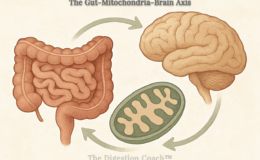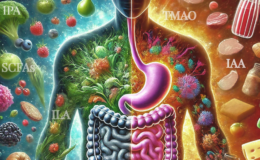Gut Microbiome Imbalances in Type 2 Diabetes and Obesity
Practicing over three and a half decades and being a gut health maven, I know that obesity is a significant risk factor for type 2 diabetes and cardiovascular disease and that recent research has highlighted the gut microbiome’s role in metabolic health. Negative changes in gut bacterial composition can influence glucose metabolism, insulin sensitivity, inflammation, and energy balance, all contributing to the development and progression of type 2 diabetes. One of the most significant findings in this area is the reduction of butyrate-producing bacteria and the increase of Lactobacillus species in individuals with type 2 diabetes. These shifts in microbial populations may worsen metabolic dysfunction and contribute to the disease process.
The Role of Butyrate-Producing Bacteria
Butyrate is a short-chain fatty acid (SCFA) produced by beneficial gut bacteria, including Faecalibacterium prausnitzii, Roseburia, and Eubacterium rectale. These bacteria break down dietary fiber to produce butyrate, which has anti-inflammatory and gut-protective properties. Butyrate plays several important roles in metabolic health:
- Enhancing gut barrier integrity: By strengthening the intestinal lining, butyrate reduces gut permeability (leaky gut), preventing harmful bacterial endotoxins (such as lipopolysaccharide [LPS]) from entering the bloodstream and triggering systemic inflammation.
- Improving insulin sensitivity: Butyrate enhances insulin signaling in muscle and liver cells, helping to regulate blood sugar levels.
- Regulating energy metabolism: It influences the release of hormones like GLP-1, which helps control appetite and blood sugar.
Since individuals with type 2 diabetes have lower levels of butyrate-producing bacteria, they may experience weakened gut integrity, higher inflammation, and increased insulin resistance, all of which worsen metabolic dysfunction.
Increased Lactobacillus Species: A Cause or Effect?
In contrast, studies have shown that Lactobacillus species are elevated in type 2 diabetes, though the reason for this shift is still debated. Some Lactobacillus strains have been associated with higher gut permeability and chronic low-grade inflammation, potentially exacerbating insulin resistance. Additionally, some Lactobacillus species ferment simple sugars, which could influence glucose absorption and metabolism.
Conclusion
The gut microbiome plays a crucial role in metabolic disease. Microbial imbalances in type 2 diabetes—a loss of butyrate-producing bacteria and increased Lactobacillus species—can contribute to insulin resistance, inflammation, and metabolic dysfunction. Part of my focus as a digestion coach is to target the microbiome through diet, prebiotics, and lifestyle modifications, which offer an optimal approach to improving metabolic health and preventing disease progression.
Additional Data on Metabolic Disease
Metabolic disease is a group of disorders that affect how the body processes energy and nutrients. These diseases can manifest in various ways depending on the specific condition, but some common signs and symptoms include:
Physical Symptoms:
- Obesity or unexplained weight loss: Many metabolic disorders, such as diabetes and metabolic syndrome, can lead to weight changes.
- Fatigue – Affected metabolism can cause constant tiredness and low energy levels.
- Enlarged liver or spleen – Seen in conditions like fatty liver disease.
- Skin changes – Dark patches on the neck and armpits (acanthosis nigricans) are common in insulin resistance.
- Frequent infections or slow healing – Common in diabetes due to high blood sugar levels.
- Muscle weakness or cramps – Some metabolic disorders affect muscle function.
- Abnormal body odors – Certain metabolic disorders (like phenylketonuria) cause unusual smells due to improper breakdown of substances.
Biochemical and Medical Indicators:
- High blood sugar levels – A hallmark of diabetes.
- High cholesterol and triglycerides – Common in metabolic syndrome.
- Elevated liver enzymes – Often seen in metabolic liver diseases.
- Ketosis or lactic acidosis – Found in some inherited metabolic disorders.
- Abnormal hormone levels – Thyroid or adrenal disorders affect metabolism.
Common Metabolic Diseases:
- Diabetes (Type 1 and Type 2)
- Metabolic syndrome (a combination of obesity, high blood sugar, and high cholesterol)
- Hypothyroidism and hyperthyroidism
- Fatty liver disease (NAFLD)
- Phenylketonuria (PKU)
- Mitochondrial diseases
COMPLEMENTARY 15-MINUTE CALL
Take your first step toward a renewed sense of well-being. Call today to arrange a complimentary 15-minute consultation.
Let’s discern whether my approach aligns with your needs.
I look forward to connecting with you at 714-639-4360.










